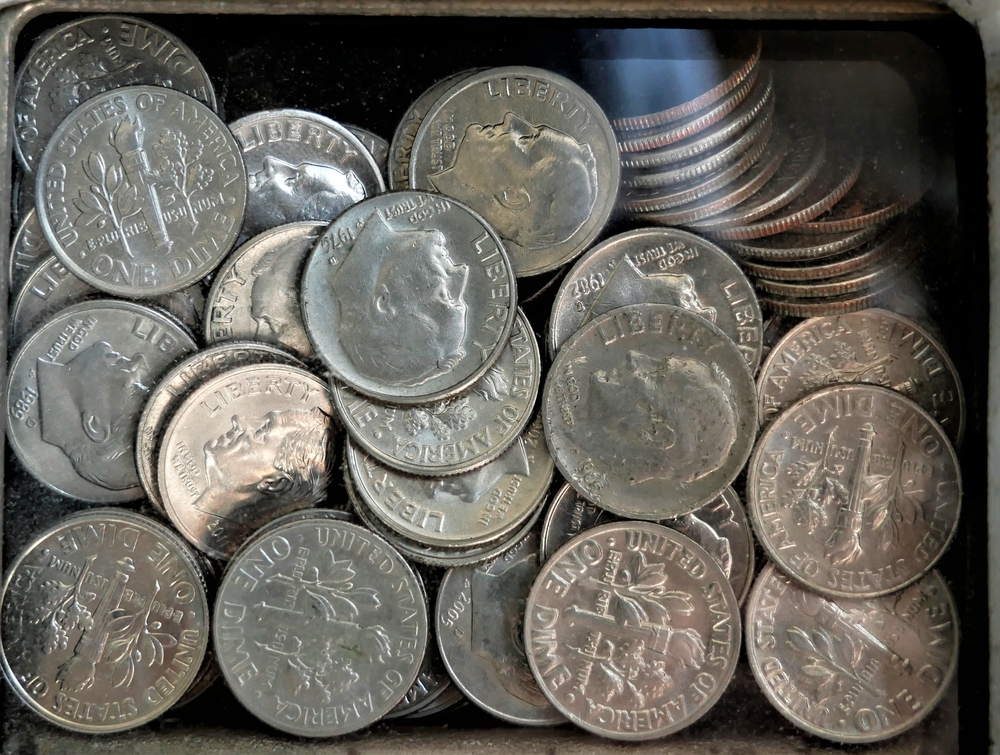The 1970s were a simpler time—no smartphones, no online banking, and gas under a dollar a gallon. Back then, financial advice was mostly about saving a little from each paycheck and keeping your bills paid. But those old habits don’t hold up in today’s economy, where debt grows faster, prices fluctuate wildly, and digital money moves in seconds. Some financial behaviors that worked 50 years ago can actually sabotage your wallet now. Here are ten spending habits from the 70s that might quietly be wrecking your finances today.
1. Paying With Checks for Everything
In the 1970s, checks were the mark of responsibility. But now, they’re a time-consuming risk. The Federal Trade Commission (FTC) warns that paper checks are more vulnerable to fraud and identity theft than digital payments. They also delay transactions, making it harder to track balances in real time. Modern budgeting apps and debit alerts do what checkbooks once did—only faster and safer. Clinging to checks today can lead to overdrafts, late fees, and even stolen account info.
2. Keeping All Savings in a Regular Bank Account
Back in the 70s, parking your money in a passbook savings account was normal. But now, traditional accounts yield almost nothing—while high-yield savings accounts can pay 20–30 times more. With inflation eroding purchasing power, ignoring higher-yield options is a losing move. CDs, money market accounts, or even Treasury bills can offer better short-term growth with low risk. Keeping all cash “safe” in a basic account today means guaranteed loss to inflation.
3. Financing Everything With Store Credit
Department store cards were popular in the 70s—they offered discounts and credit access when few people had bank cards. But now, these cards carry some of the highest interest rates in retail, often above 30%. Using them for daily purchases can snowball debt fast. A better alternative is a cash-back or low-interest credit card with broader protections. Store credit was once convenient—today, it’s a financial trap.
4. Buying the Biggest House You Can “Afford”
The 70s housing market rewarded buyers who stretched their budgets. For example, prices were stable, and mortgages were cheap. But now, oversized homes come with high insurance, maintenance, and property taxes. The smart move now is buying below your means to protect your cash flow. Overspending on a house today locks you into decades of financial pressure that no “American Dream” can justify.
5. Paying With Cash to Avoid Credit
In the 70s, avoiding credit was a badge of honor. But today, no credit history can hurt you more than bad credit. Lenders, landlords, and even insurers use credit scores for risk assessment. Having no credit can block access to loans or drive up rates by thousands over time. Responsible credit use now builds protection and flexibility that cash-only lifestyles can’t provide.
6. Ignoring Retirement Until Your 40s
Boomers could start saving for retirement later because pensions filled the gap. But with pensions nearly extinct, waiting is dangerous. Starting at 25 versus 40 can mean hundreds of thousands more by retirement. Compounding is everything—and the later you start, the harder it is to catch up. What worked for your parents will not work for you in a 401(k)-driven world.
7. Buying New Cars Every Few Years
In the 70s, car models changed constantly, and trade-ins were part of middle-class life. But with new cars averaging over $50,000, according to Kelley Blue Book, frequent upgrades are financial suicide. Depreciation now erases thousands the moment you drive off the lot. Keeping a reliable car for a decade saves insurance, taxes, and interest. Style changes fast—but debt lasts longer.
8. Paying Bills by Mail
Once the standard, mailing bills now invites late fees and lost payments. The U.S. Postal Service continues to experience slower delivery times, meaning checks may arrive days late. Online bill pay ensures instant delivery and confirmation receipts. Paper billing also increases exposure to mail theft, one of the fastest-growing forms of identity fraud. Auto-pay systems prevent missed due dates and keep your credit score spotless.
9. Avoiding the Stock Market Entirely
Many people in the 70s viewed stocks as risky gambling—and that fear still lingers. But historically, the S&P 500 has outperformed savings accounts and bonds by wide margins over every 20-year period. Staying out of the market now almost guarantees lower long-term returns. Even conservative index funds or target-date retirement funds can grow wealth steadily. The new risk is not investing at all.
10. Treating Debt Like a Moral Failure
Older generations viewed debt as shameful, but avoiding all debt limits financial flexibility. Used strategically, debt can build credit, buy appreciating assets, and open opportunities. The key difference is intention: leveraging debt, not drowning in it. Balance debt-to-income ratios under 36%. Responsible borrowing today can be a tool for progress, not punishment.
From Retro Habits to Modern Money Smarts
Your grandparents’ financial habits built stability in their era—but the economy has changed. Inflation, digital transactions, and new financial products demand updated strategies. The safest path today isn’t clinging to the past—it’s adapting what worked then to fit the modern world. Outdated money rules can quietly cost you thousands if left unexamined. Which 70s habit are you still holding onto?
Do you still follow any of your parents’ old-school money habits? Share which ones still work—and which you’ve had to leave behind—in the comments below.
You May Also Like…
7 Items That You Could Afford in 1993 That Are Totally Out of Reach Today
Times Have Changed: 10 Ways Boomers Lived That Don’t Exist Today
What Keeping Your Savings In Cash Costs You in Today’s Market
Is It Still Worth Investing in CDs With Today’s Inflation?
5 Former Jobs That Are Basically Nonexistent Today



























